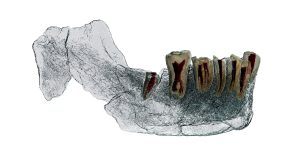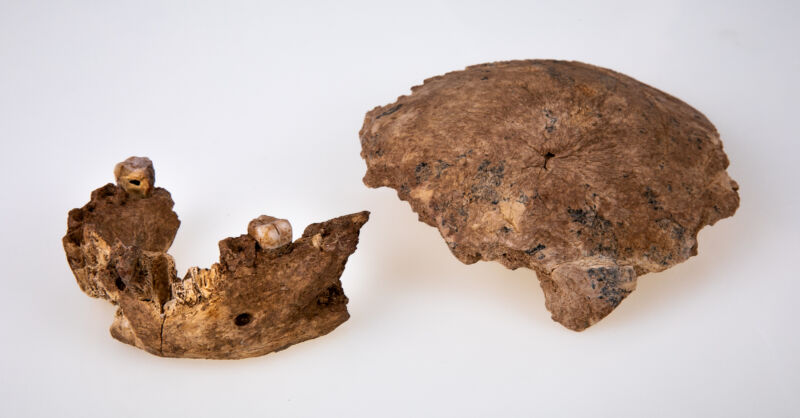It's long past time to stop thinking of humanity's nearest relatives as forming a family tree. Our close relatives like the Neanderthals and Denisovans clearly interbred both with us and each other. There are also indications that an older African lineage contributed to our ancestry; Neanderthals seem to have picked up some DNA from an even older lineage as well. All of that makes humanity's ancestry look more like a river delta, with multiple channels separating and reuniting over time.
In today's issue of Science, a group of researchers argue that they have found yet another channel that may sit at a key point in our past. A small collection of bones from a site in the Mideast seems to have a mix of archaic and Neanderthal-like features, suggesting that the bones may be related to the source of archaic DNA in the Neanderthal lineage. But the bones come from well after the Neanderthal lineage was distinct, and the artifacts found with them suggest extensive interactions with other human lineages.
A bit of a mix
The site, located in Israel, is called Nesher Ramla. Extensive dating of materials found there suggests that the newly described bones date from roughly 120,000 to 140,000 years ago—a complicated time in our species' history, to say the least. Neanderthals and Denisovans had already inhabited Eurasia, which they shared with other archaic human lineages, along with Homo erectus. Modern humans were present in Africa and shared the continent with various archaic lineages, many of which had some modern features. And there is evidence that a lot of these groups crossed paths in the Mideast.
The discovered human bones include part of the parietal bones, which form the roof and sides of the skull, and a portion of the jaw. In many ways, the bones are difficult to characterize because they represent a mix of features that are both archaic and found in more recent lineages. An analysis of the parietal bones places their features awkwardly between groups that include Homo erectus, Neanderthals, and the Homo lineages that were present in Europe at the time. The bones were distant from modern human remains.
The jaw produced similar results, with the new remains perched in between Neanderthals and some of the human lineages present in Europe. Homo erectus was a bit more distant, as were other Eurasian human lineages. Imaging of teeth found separately, along with the roots present in the jaw, provided some additional information.

This placement between groups is the product of individual features looking either like those of Neanderthals or those of archaic human lineages, so the researchers are hesitant to assign a new species. But they do argue that this population was a late survivor of a lineage that goes back to before the origin of Neanderthals and likely contributed to them genetically. That argument isn't outrageous given how much we now know about interbreeding among our ancestors, but it's still likely to be the subject of debate going forward. (In fact, the arguing has already started, with at least one paleontologist asserting that the features don't cleanly distinguish the remains from a variation found within Neanderthals.)
Cultural exchange
There will probably be further arguing over the fossils' anatomic relationships with other human ancestors. But the Nesher Ramla site doesn't just have bones; there's also an extensive record of stone tools in the sediment layers. And the structure of these tools indicates that they were made via a very specific manufacturing technique called the centripetal Levallois method.
The stone comes from an area near the site, indicating that trade wasn't needed. But the technique used to shape the stone produced artifacts very similar to those associated with Homo sapiens found at sites ranging from North Africa to the Arabian Peninsula. So whatever species or subspecies they were, the people of Nesher Ramla were likely to be culturally integrated with the other human populations around them—at least to the extent that toolmaking techniques were shared.
That's an interesting finding in its own right, but it also serves as a caution. Because of the association of this technology with Homo sapiens, it is tempting to use it as a marker for our spread out of Africa. But if the stone technology was readily adopted by archaic populations as well, we can't make the assumption that it travelled with any specific population, the authors said.
Science, 2021. DOI: 10.1126/science.abh3020, 10.1126/science.abh3169 (About DOIs).



3175x175(CURRENT).thumb.jpg.b05acc060982b36f5891ba728e6d953c.jpg)

Recommended Comments
There are no comments to display.
Join the conversation
You can post now and register later. If you have an account, sign in now to post with your account.
Note: Your post will require moderator approval before it will be visible.